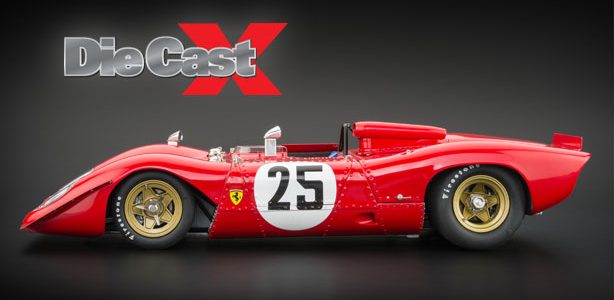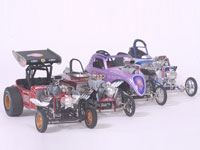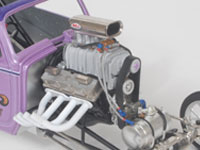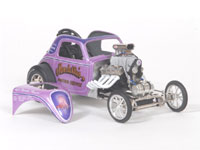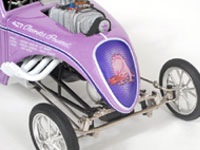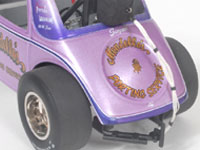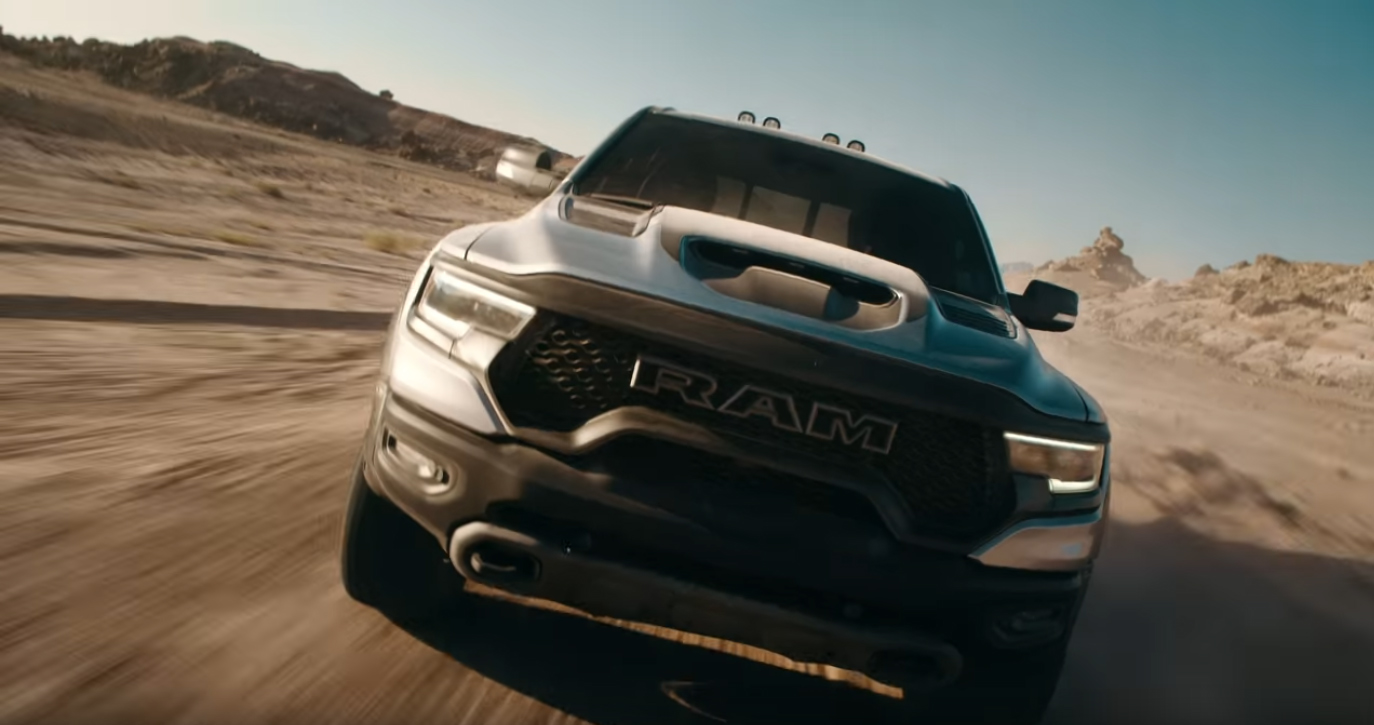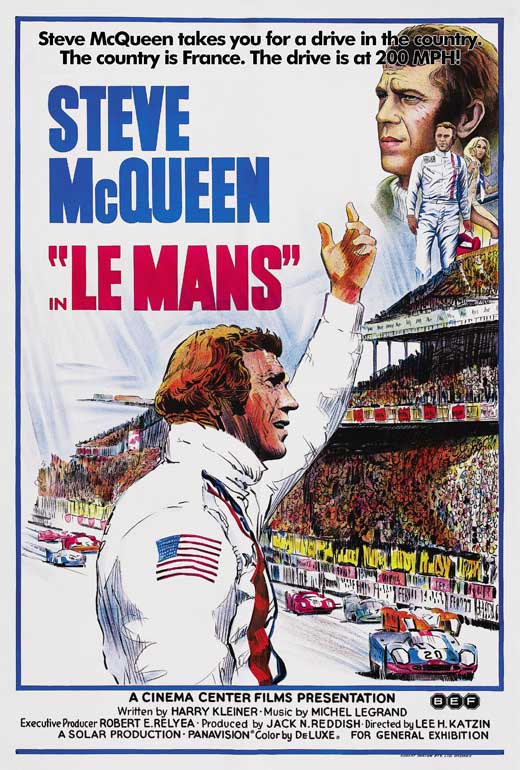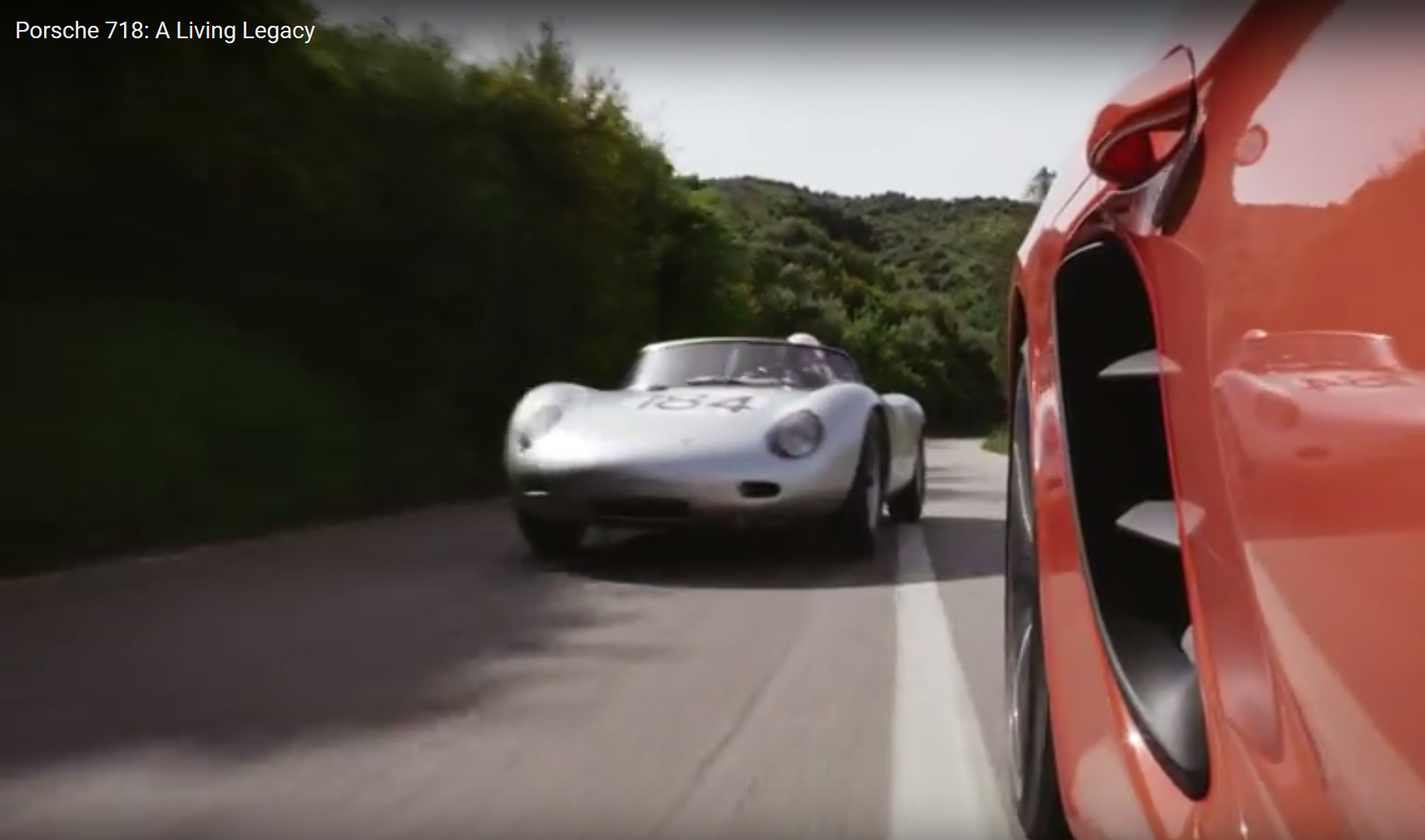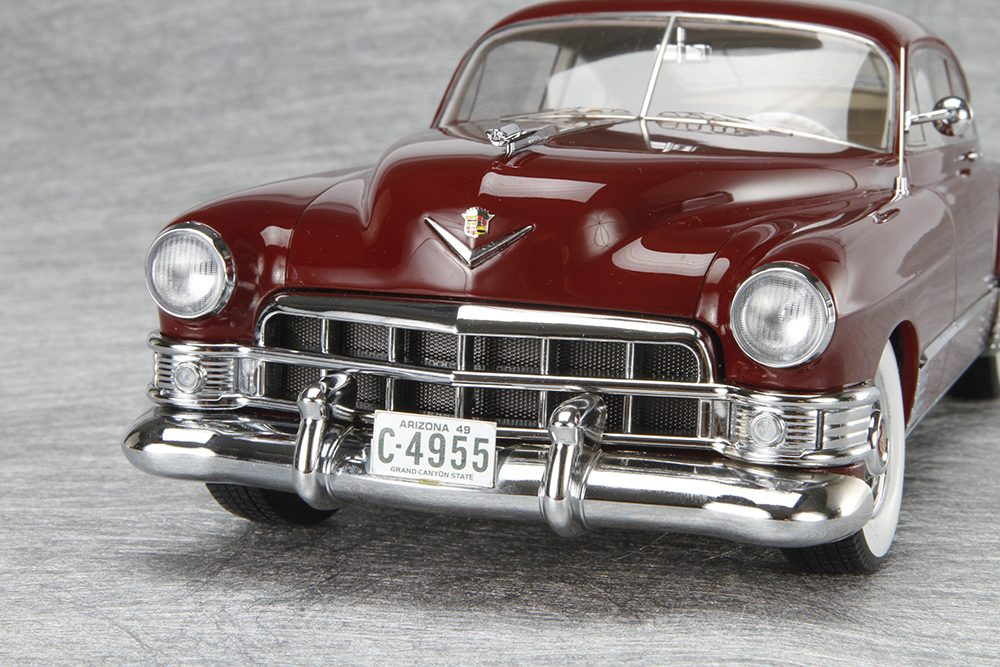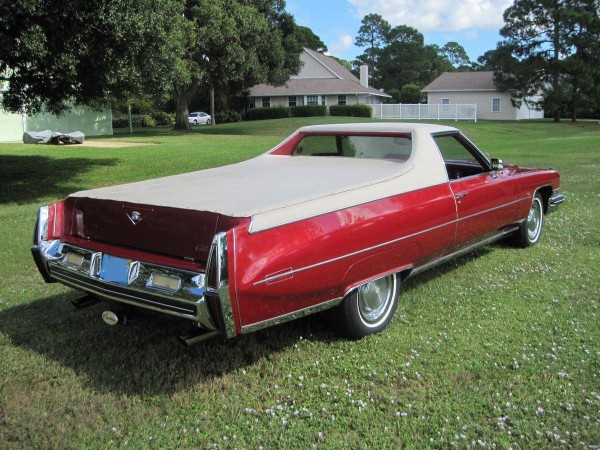![]()
|
|
|
|
|
|
|
|
|
|
|
|
|
|
Altered States
A Little Altered History. Fuel Altereds were drag racings perfect recipe for excitement and danger! Take a short, lightweight tube chassis (sometimes chromemoly, sometimes exhaust tubing), a Model T, Fiat Topolino or Bantam body, install a fire-breathing nitromethane-burning dragster motor, turn it over to one of the gods of Fuel Altered racing
. Wild Willie Borsch, Sush Matsubara, Dale The Snail Emery or Leon Fitzgerald, line it up with another one of these wicked monsters and you would get a show that would make the Dragster and Funny Car pilots look like slackers!![]()
What started as a bunch of guys racing their street-driven coupes and roadsters at the dry lakes north of Los Angeles after World War II, had, by the mid- 60s, morphed into purpose-built race cars running at the drag strips with fiberglass bodies and tube chassis, powered by 1000 2000 horsepower fuel dragster motors. Where the dragster racers had learned that lengthening the chassis meant fewer wheelstands, more directional stability and thus more consistency, the Fuel Altered class, as it had now become, was still working with a wheelbase of less than a 100 inches. ![]()
But that didnt stop the altered racers from using all of the burgeoning engine technology coming from the Fuel Dragster racers and so you got short, unstable cars that, on a good day, could match the performance of the Fuel Dragsters, but on a great day would be sideways, all over the strip, bouncing off the Armco, with their wheels in the air and, all the while, their injector butterflies wide-open. Often the drivers never got their cars gathered-up until after the parachute had popped! Fuel Altered drivers were best known for their unwillingness to lift no matter how sideways and crossed-up they got and this made for a great show!![]()
And these drivers were the key. These guys were the craziest, bravest, most-talented bunch of racers in drag racing. They had to be! These cars were the meanest, nastiest, hardest to handle cars that had ever been raced. Many believed these guys had death wishes, but for the pure thrill of taming the beast, these guys were the masters.![]()
Besides thrilling the spectators, Fuel Altereds also scared the hell out of the National Hot Rod Association (NHRA)! The NHRA was the largest sanctioning body for drag strips across the US, and the NHRA provided the insurance that was a necessity for these drag strips to stay in business. Thus, the NHRA had to walk a fine line between putting on a great show and not having anything that was so inherently dangerous as to scare off their insurance underwriters or the corporate sponsors that paid the big bucks to have their logos plastered over every NHRA event.![]()
On the other hand, Fuel Altereds were the definition of inherently dangerous! And as they got to be increasingly faster (210 mph in under 7 seconds in 1972), fewer and fewer strips would allow them to run. ![]()
As a result, Fuel Altereds were most commonly found racing at renegade strips like Irwindale, Lions or Orange County International Raceway, all in Southern California or Fremont in Northern California. But when many of these strips became NHRA sanctioned, the writing was on the wall and many teams simply parked their cars and switched to Funny Cars or Dragsters. By 1973, the class had all but been legislated out of existence![]()
But, for the years they ran, they put on a show that thrilled and amazed the spectators and left a lasting memory of this exciting and ill-tempered class.![]()
To celebrate these wonderful cars, Precision Miniatures has created four 1:18 scale replicas of the most well-known of the AA/ Fuel Altereds: the Marcellus and Borsch Winged Express, Rich Guascos Pure Hell, Mondello & Matsubaras Fiat Topolino and Fitzgerald, Rockman & Reeds Pure Heaven II. Although released over a period of close to four years, each one of these cars reflects Precision Miniatures high quality and accuracy standards and, for purposes of assessing how they did, all four can be considered equal.



